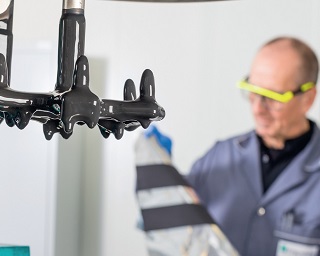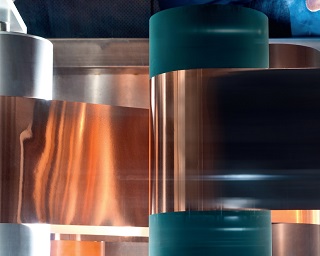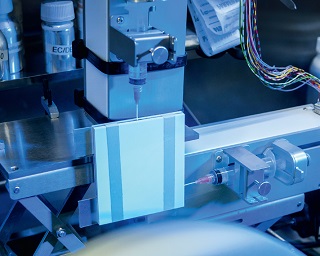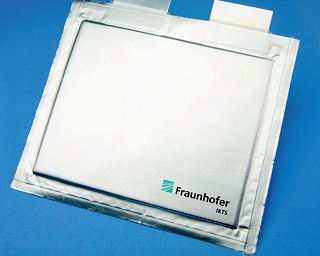
Technology development for lithium-ion batteries

Slurry preparation

In the conversion of the starting powders to a homogeneous slurry, all components must be adapted to the applied coating process and the desired electrode properties. In doing so, Fraunhofer IKTS draws on its expertise in ceramic technologies. The active materials define the capacity, while the conductive additives are decisive for the electrode resistance. In addition, the organic binder materials used essentially determine the later mechanical stability of the electrodes, the processability, and the cycling stability.
Fraunhofer IKTS utilizes various mixing units, such as dissolvers, planetary mixers, and kneaders, for tailored slurry preparation. During processing, parameters such as energy input, temperature control, particle stability, atmosphere, and mixing duration determine the degree of dispersion. At the end of the mixing process, coordinated process routes ensure a homogeneous particle distribution in the slurry and they prevent reagglomeration.
Fraunhofer IKTS focuses on substituting organic solvents with water-based solvents and reducing the solvent content to maximize the environmental friendliness of the production process.
Related Links
Electrode production

Doctor blade, comma bar, and slot die casting as well as various drying methods are used in the development of electrode coating processes. Batch processes, such as screen printing and mask extrusion, enable a flexible design of electrode geometry.
Selection of suitable process parameters during electrode manufacturing can dramatically improve long-term stability and performance, and it can yield advantages with respect to cost-effectiveness, quality, and speed. Focus is on the following:
- Optimum adhesion and binder distribution after drying
- High coating speeds
- Surface quality (no blowholes or particles)
- Prevention of gas pockets
- Minimal fluctuations in layer thickness
Significant cost-saving potential can be realized through optimization of temperature profiles in the drying zones and monitoring of the electrode drying process. However, these energy savings should not have an impact on adhesion, morphological properties, electrode quality, and process speeds. The final electrode porosity is defined through the subsequent calendering process.
Related Links
Electrolyte filling

The process times for the elaborate filling process used for lithium-ion battery cells and the long times required for penetration of the electrolyte into the separator and the electrodes still represent a huge cost factor in battery production and are closely related to the design of the electrodes and to the electrode-separator assembly. Homogeneous distribution of the electrolyte in the cell is also a prerequisite for reliable formation and cell life.
Penetration behavior of the electrolyte in the cell is controlled by numerous factors, the most important of which are the wettability of the electrodes and the separator as well as the capillary forces in the separator membrane and at the interface between the separator and the electrodes. An electrochemical method for determining the correlations between the structure and the properties in separator-electrode systems was developed based on extensive knowledge of the viscosities, surface tension, and pore structures of the electrode and separator materials. The method also allows monitoring of the penetration progress, which enables the penetration behavior of separators, electrodes, and assemblies made up of separators and electrodes with electrolytes to be described in a systematic, quantitative manner.
Related Links
Test cells and cell design

Both coin and laboratory pouch cells are used at Fraunhofer IKTS for preliminary characterization of developed materials and processes. The manufactured electrodes are stamped out according to the later cell format, tailored, and dried to a minimal residual moisture level. Subsequent cell assembly and electrolyte filling are performed in glove boxes in an argon atmosphere.
After functional testing and formation, the cells are subjected to various tests. Pouch cells up to 5 Ah can also be manufactured in cooperation with thyssenkrupp System Engineering GmbH in a joint pilot-scale facility.
Apart from assembly of test cells, conceptual design is performed for developing cell designs adapted to specific application requirements through coordinated development of materials and processes.